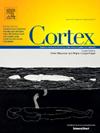Underestimation of human hand density
IF 3.3
2区 心理学
Q1 BEHAVIORAL SCIENCES
引用次数: 0
Abstract
Our body is a 3D object, with physical properties such as volume, weight and density. Our brain has to represent these physical properties in the perception of one's own body and body parts. It has been shown that we have a distorted representation of hand size and hand weight. In this study, we investigated the perception of hand volume without experimental alterations. We found that people overestimate the volume of their hand on average by 24%, relative to its actual volume, and we replicated the hand weight underestimation by 25% relative to its actual weight. With a precise estimation of perceived hand volume and hand weight, we calculated perceived hand density. The mean perceived hand density was .75 g/cc, comparable to foam beads, an underestimation of 31% of actual hand density. Our findings suggest that the brain maintains a stable representation of hand density at a low level, with perceived hand weight and volume adjusting accordingly, rather than being estimated independently. Our results add to a body of evidence showing that the representation of our body parts is inherently distorted. This study contributes to the understanding of how volume, weight and density are estimated in the perception of body parts, and the relationship between the representations of physical bodily properties.
低估人手密度
我们的身体是一个三维物体,具有体积、重量和密度等物理属性。我们的大脑必须在感知自己的身体和身体部位时表现出这些物理特性。研究表明,我们对手的大小和重量有一种扭曲的表征。在这项研究中,我们在没有实验改变的情况下研究了手体积的感知。我们发现,相对于实际体积,人们平均高估了24%的手的体积,而相对于实际重量,我们重复了手部重量低估了25%的情况。通过对感知手体积和手重量的精确估计,我们计算了感知手密度。平均感知手密度为0.75 g/cc,与泡沫珠相当,低估了实际手密度的31%。我们的研究结果表明,大脑在较低的水平上保持了手部密度的稳定表征,感知到的手部重量和体积会相应调整,而不是独立估计。我们的研究结果增加了大量证据,表明我们身体部位的表征本质上是扭曲的。这项研究有助于理解如何在身体部位的感知中估计体积,重量和密度,以及物理身体特性表征之间的关系。
本文章由计算机程序翻译,如有差异,请以英文原文为准。
求助全文
约1分钟内获得全文
求助全文
来源期刊

Cortex
医学-行为科学
CiteScore
7.00
自引率
5.60%
发文量
250
审稿时长
74 days
期刊介绍:
CORTEX is an international journal devoted to the study of cognition and of the relationship between the nervous system and mental processes, particularly as these are reflected in the behaviour of patients with acquired brain lesions, normal volunteers, children with typical and atypical development, and in the activation of brain regions and systems as recorded by functional neuroimaging techniques. It was founded in 1964 by Ennio De Renzi.
 求助内容:
求助内容: 应助结果提醒方式:
应助结果提醒方式:


